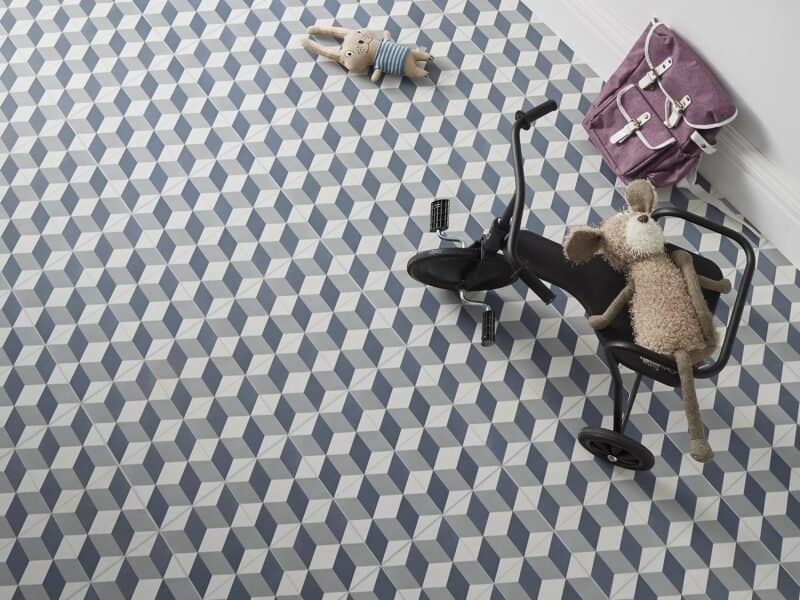With the amount of choice available on the market, nowadays choosing a flooring option for your home can be a confusing exercise.
One way of helping the process is to consider the practical aspects and functional needs of the room you are working on. This will go a long way towards helping you narrow down the list of flooring that best suits the room.
You can start with some general considerations, such as how much traffic is expected to pass through the room. This is one of the most important factors in your flooring decision.
For example, if the foot traffic is expected to be very heavy and very high, then laminate flooring might be the best choice, followed by bamboo or some of the harder wood flooring options. This is especially true if you have children and pets.
On the other hand, if there is going to be little traffic through the room, then you can focus more on aesthetics first as the type of flooring material won’t be such a concern.
Think also about how long you wish your flooring to last in that area and how often you are prepared to replace it.
Maintenance
Another thing to think about is maintenance. For example, again if you have children and pets – and you do not have the time or inclination for constant floor cleaning and care – then a luxury cream carpet would be a poor choice.
Dark carpets or patterned carpets might be better – or even hard surfaces, like ceramic tile, might be more suitable as it will not retain as much dirt, dust and pet allergens. It is also easier to clean in the event of spills and stains. Of course, it is not as warm and comfortable, however, and so this must be considered, especially if children are younger and likely to play on the floor.
Think also about the physical conditions of the room and what the flooring will have to endure. Will it be exposed to a lot of strong sunlight? Will there be extremes of temperature or high levels of humidity and moisture?
In the former situation, hardwood, bamboo and engineered hardwood are a better choice as they expand and contract less in temperature fluctuations; in the latter situation, laminates are the best choice for ‘wet’ areas.
Think also about any existing flooring: the successful installation and good appearance of any finished flooring will depend largely on the sub floor and how level and dry it is.
In addition, if you have a concrete sub floor, for example, then you will probably have to use a floating floor system rather than hardwood flooring, which requires nailing to the sub floor (which therefore must be plywood or planking).
Finally, don’t forget to consider the location of electrical and phone outlets in the room and the need for or installation of heating and air conditioning systems.
Another way to decide is to look at the specific needs of the room you are fitting the flooring in:
Kitchen
The kitchen is usually the centre of activity in a home and an area of high traffic, and wear and tear, particularly in terms of stains and spills. This means more cleaning required – and also more chances of accidents.

A popular option for a busy kitchen area, low maintenance and suits a variety of colour schemes.
Available from diy.com
For these reasons, laminate, Vinyl or Linoleum have been popular choices, closely followed by ceramic tile – although this has the disadvantages of being colder and harder on feet, as well as any falling object (or child!).
Living Room
Another room that is often the focus for family activity, it is important for the living room flooring to be comfortable. However, because it is also often the room which entertains guests, it is also important for the flooring to be attractive.

Bathroom
The main thing to consider here is of course the wet and therefore any flooring installed must be water-proof. It must also be washable, easy to clean and ideally non-slip. Thus avoid carpet and hardwood – choose tile, vinyl or even laminate that is specially designed for high moisture areas.

A natural look and an ideal easy-care solution for bathroom floors.
Available from diy.com
Entry/Hallway
This is an area of high traffic and also high soiling – any outside dirt, debris, moisture, dust and grit will be tracked in through the front door.
Since it is also the first area to greet guests, you don’t want a flooring option that stains easily and shows wear and tear.
So you need flooring that is extremely durable and withstand heavy traffic. Again, laminate and vinyl are popular choices, although for more formal settings, tile, stone or even hardwood can be better.

A hard-wearing option and the geometric pattern is perfect for making a small space look bigger.
Available from diy.com
Dining Room
Because this is an eating/drinking area, the flooring should ideally be stain and wear resistant. If the carpet used in the living room has these properties then it can be continued into the dining room.
Otherwise, tile, laminate or wood – carefully matched to the décor to continue the “flow” through the house – can be just as good.

Bedroom
The main focus here tends to be comfort and aesthetics, particularly as foot traffic is minimal.
Carpet is therefore a popular choice, particularly for the feeling of cosiness and warmth it brings, especially in cold climates. However, you can also use wood or laminate softened with rugs.

Remember that although you may need to consider the different functional needs of every room, it is important not to lose sight of the house as a whole and that the flooring choices in the individual rooms have to blend into the overall style and help maintain good “flow” through your home.


